- A new tropical eddy and bloom south of Java
- Heat in the northwest
- Where does the Indian Ocean garbage go?
SST update
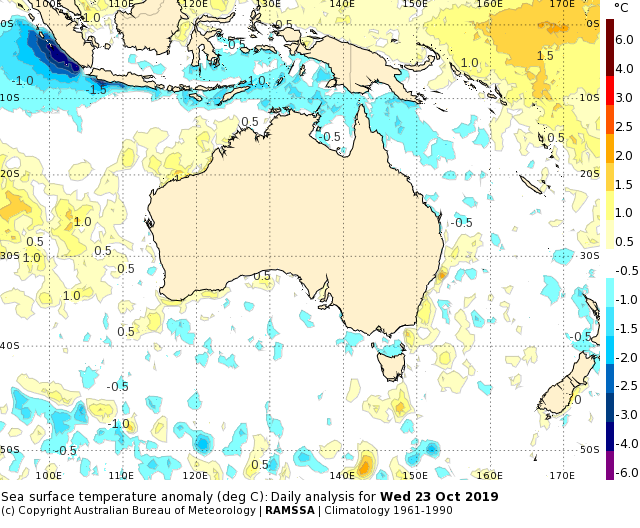
The North West Shelf is on a warming trend. It is now about 28 deg C along the Pilbara shoreline. The anomalies show it is warmer than climatology, especially along the coast.. This is likely due to strong insolation and light winds in recent weeks.
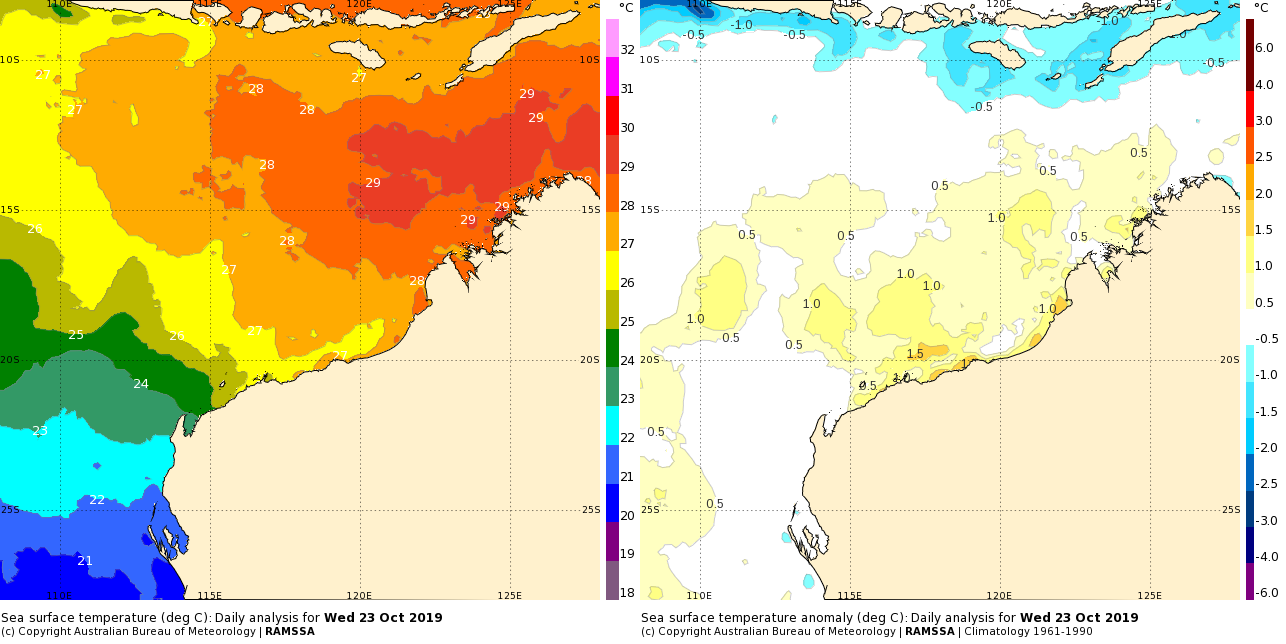
Otherwise the anomalies have weakened around most of the country, meaning conditions are close to normal for this time of year.
Further afield, the cold anomaly on the south of Sumatra continues, helping the strong positive IOD.
No garbage patch in Indian Ocean
We have heard of the Great Pacific Garbage Patch. But what about the “Indian Garbage Patch”?
Mirjam van de Mheen, Chari have published results of an experiment to answer that question. A summary was also given in a recent article in The Conversation.
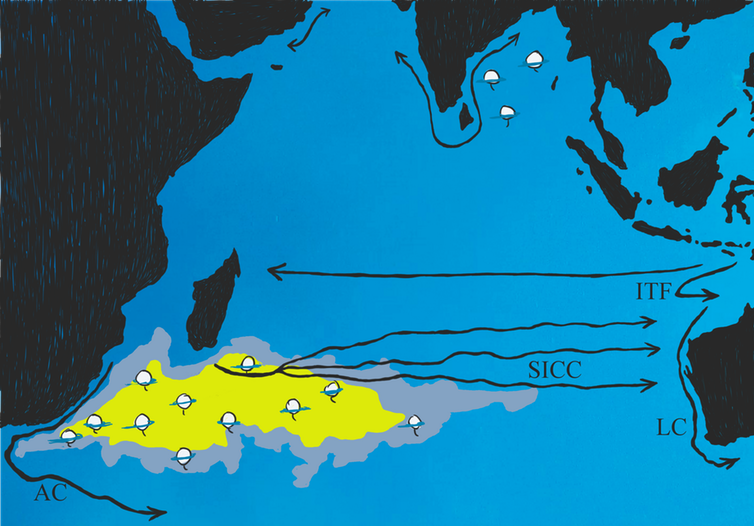
The Indian Ocean has some unusual features compared to the other ocean basins. There is no northern counterpart (due to the Asian landmass), and it has southward flowing currents on both sides of the basin. Plus the South Indian Counter Current (SICC) flows right across the middle.
This means there is no gyre. No matter how much you smooth out the currents in time and space to try to find a nice circular pattern. There are also a lot of weak but significant mesoscale eddies.
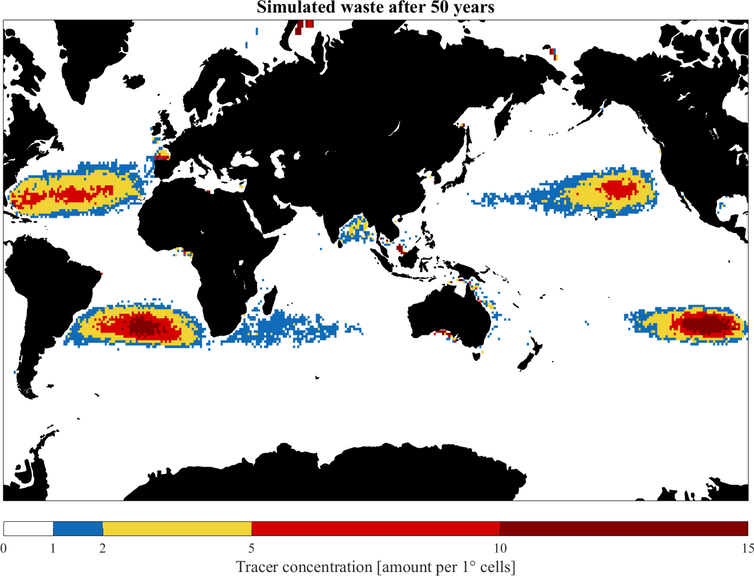
To simulate where plastic waste ends up the authors used 22,000 records of drifting buoy data. They found that the strong trade winds in the Indian Ocean pushed the waste further south and west that in other basins.
The waste accumulated in the southwest corner, and then “leaked” into the South Atlantic via the Agulhas current.
There are estimates that 90% of the plastic in the ocean comes from Asia. If that rubbish makes it way to the South Atlantic there is a large separation between cause and effect.
For more details, you can find the article here.
A new cyclonic eddy and a bloom
There a new cold eddy generated south of Java that calved off the Indonesian Throughflow towards the end of the upwelling season. It shows up strongly on the sea level anomaly charts.
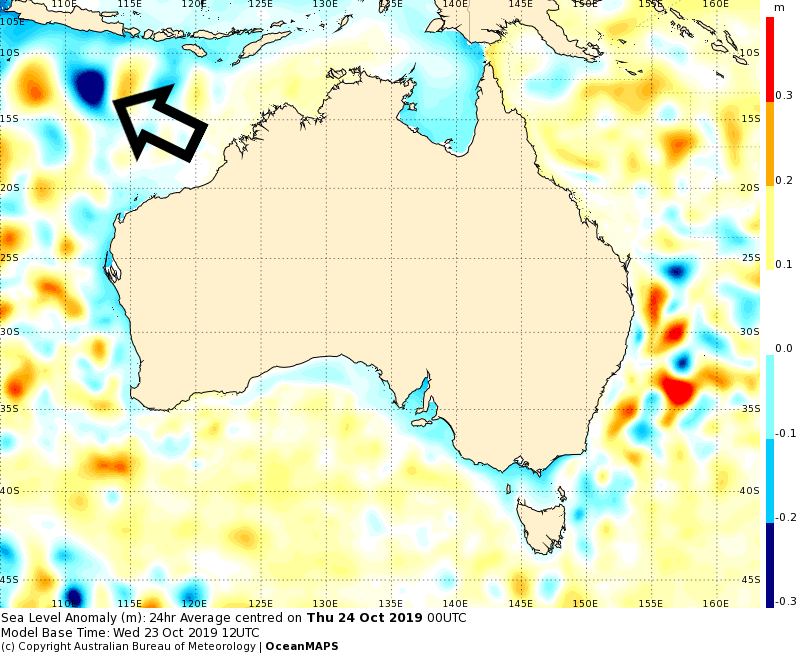
A similar eddy formed last year and showed temperatures lower than the 1st percentile in BRAN.
How does this eddy compare to last year’s?
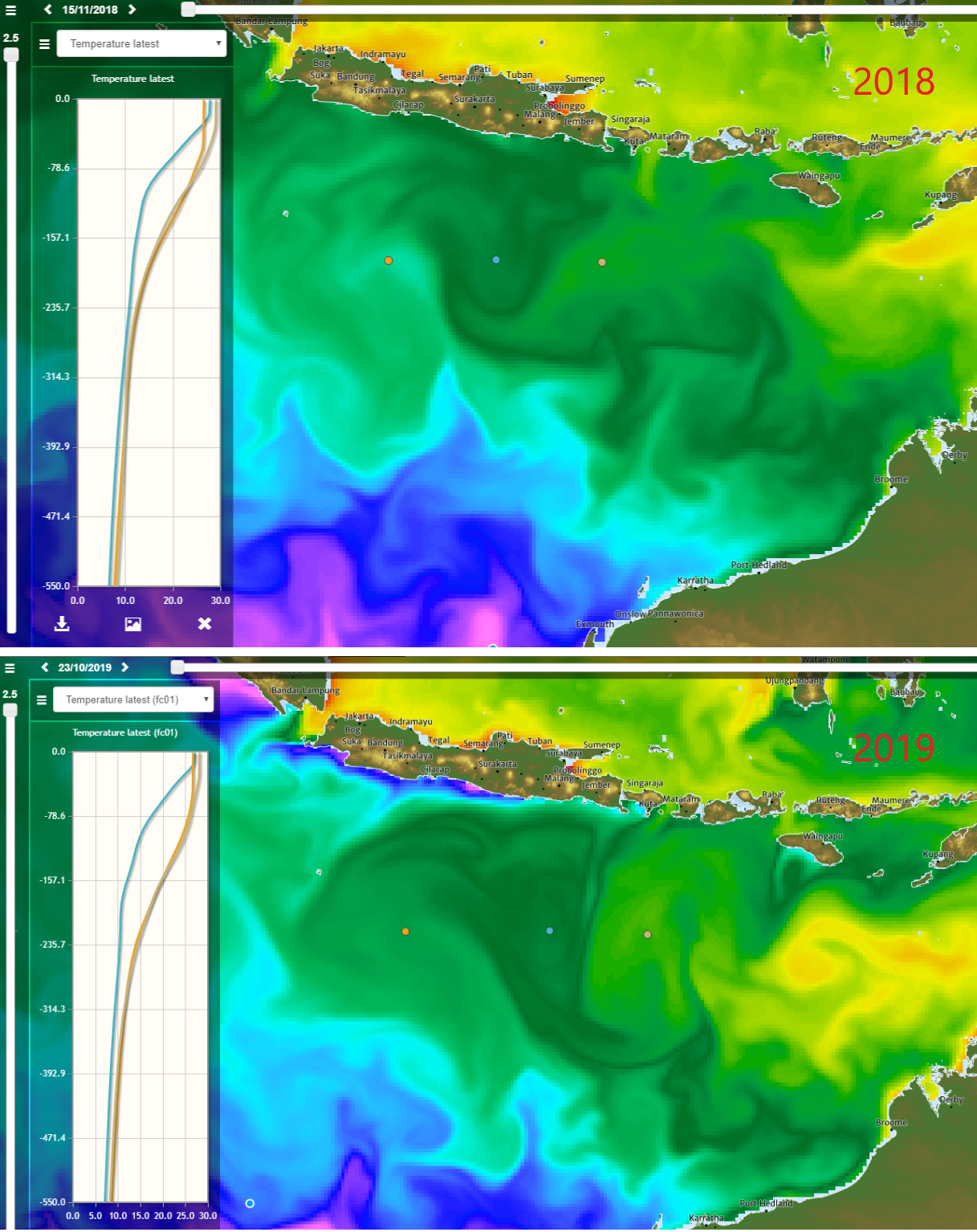
- It’s earlier
- It’s deeper
One question that needs answering is if it is as extreme as last year in terms of temperature anomalies.
But even so, why two of these eddies in two years? They weren’t there in 2016 or 2017.
At least one paper makes a link between positive Indian Ocean Dipole events (ie. strong upwelling) and the generation of cyclonic eddies and phytoplankton blooms in the region. Reddy and Salvekar (1998) posit that the eddies are caused by the interaction between the eastward coastally trapped Kelvin waves and the westward equatorial Rossby waves. Upwelled water is then entrained into these features. The eddy drifts southward before being picked up in the South Equatorial Current and starts moving west. Perhaps this interaction and eddy generation happens all the time.
However the intensity of the eddy may be related to the intensity of the upwelling and the IOD.
That might explain it. The IOD has been strongly positive both of these last two years.
Interestingly, these cyclonic eddies cause strong chlorophyll blooms out to sea. The rich nutrients captured in the upwelled water along the coast are concentrated into the circular eddy.
Another study found that an eddy-related surface bloom is only generated when the deep Chl-a maximum is within the mixed layer depth (Iskander et al 2010).
Do we have a chlorophyll bloom at the moment? In the gappy ocean colour images, it was possible to find one day recently that covered the area. It indicated that there is an offshore chlorophyll bloom that is separate from coastal upwelling.

From this we might conclude that positive IODs are good for fish in the eastern Indian Ocean, … even if they aren’t good for farmers in eastern Australia.
That’s a wrap for 2019. The Ocean Outlook blog should return in 2020.



